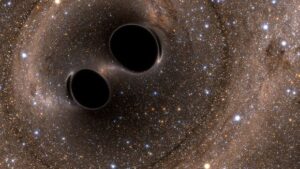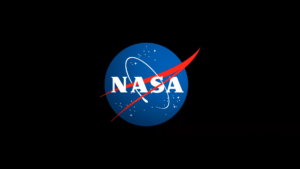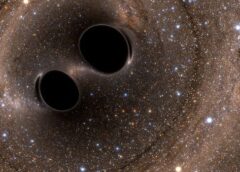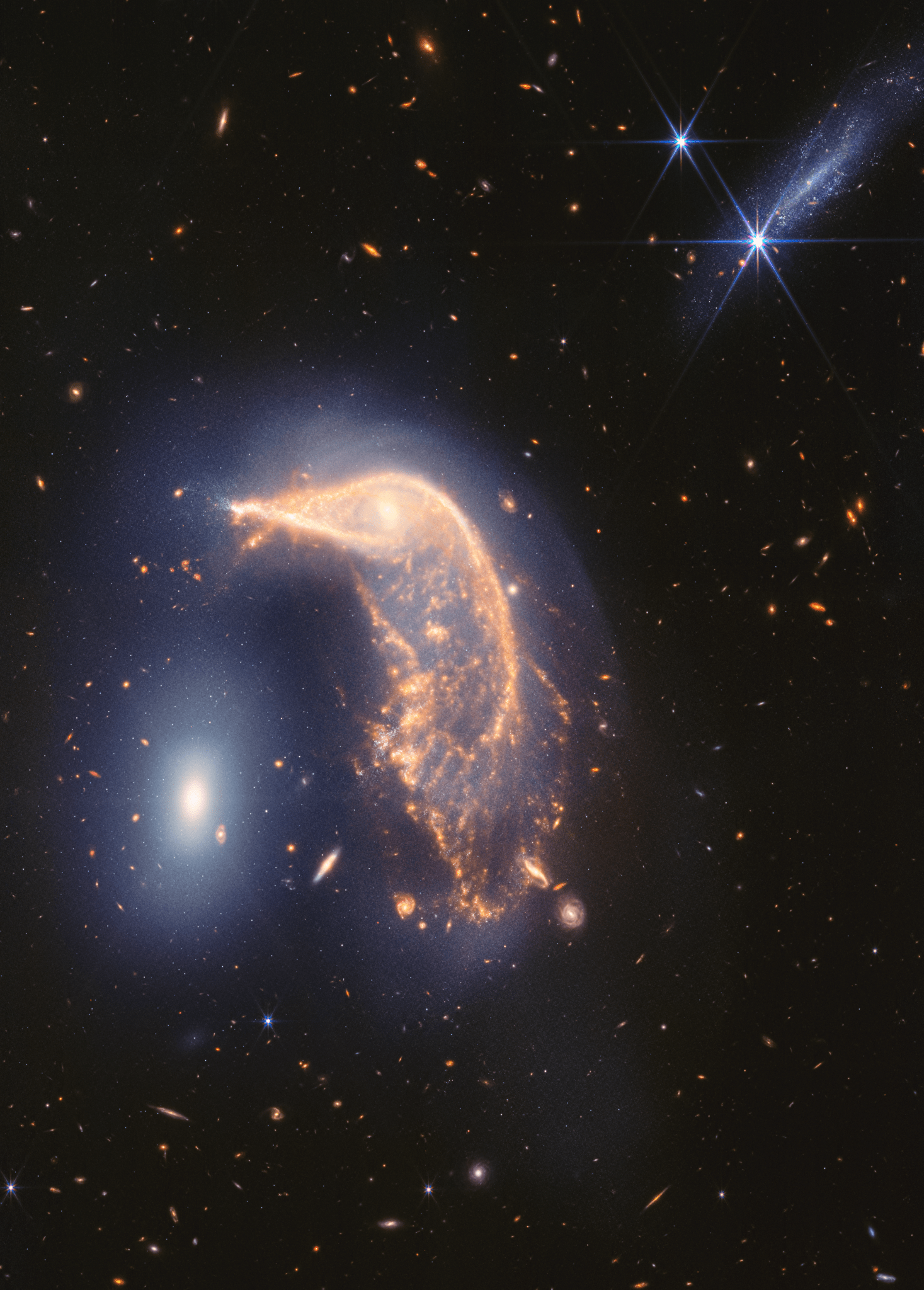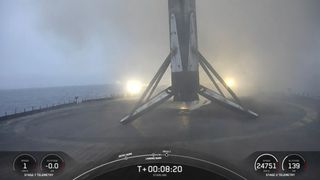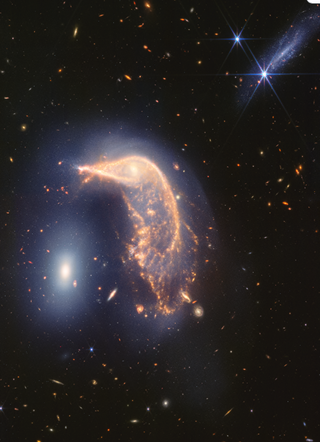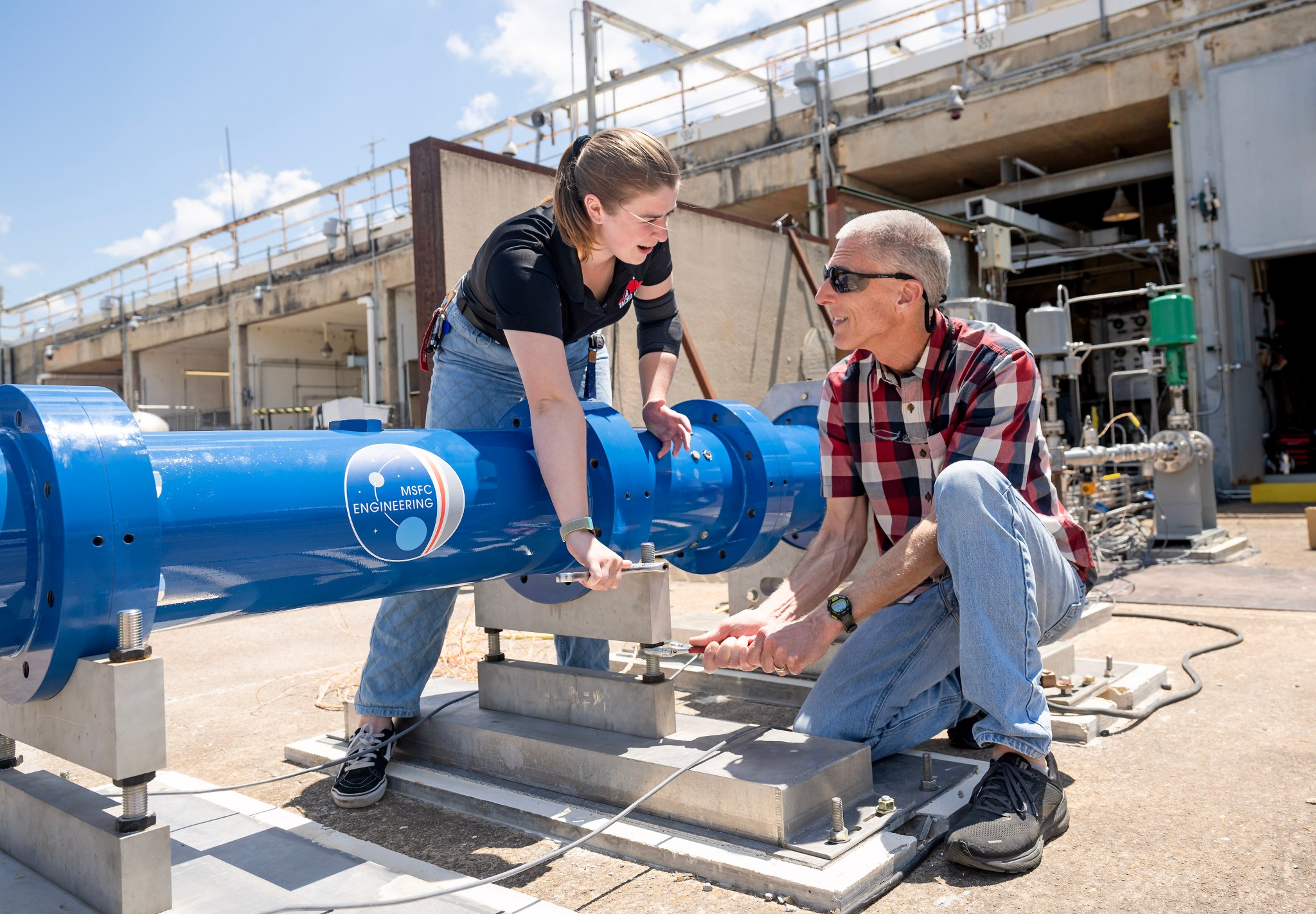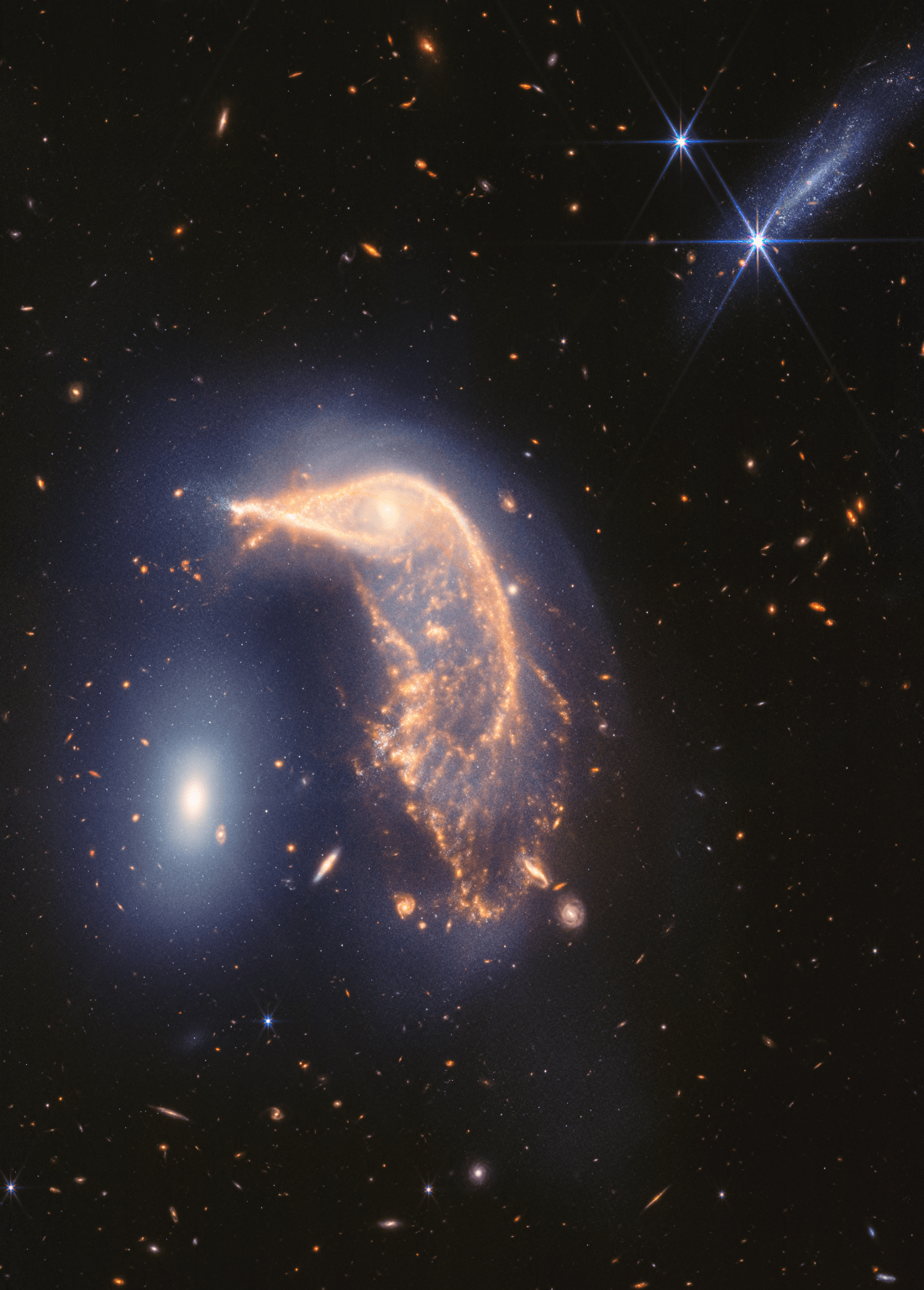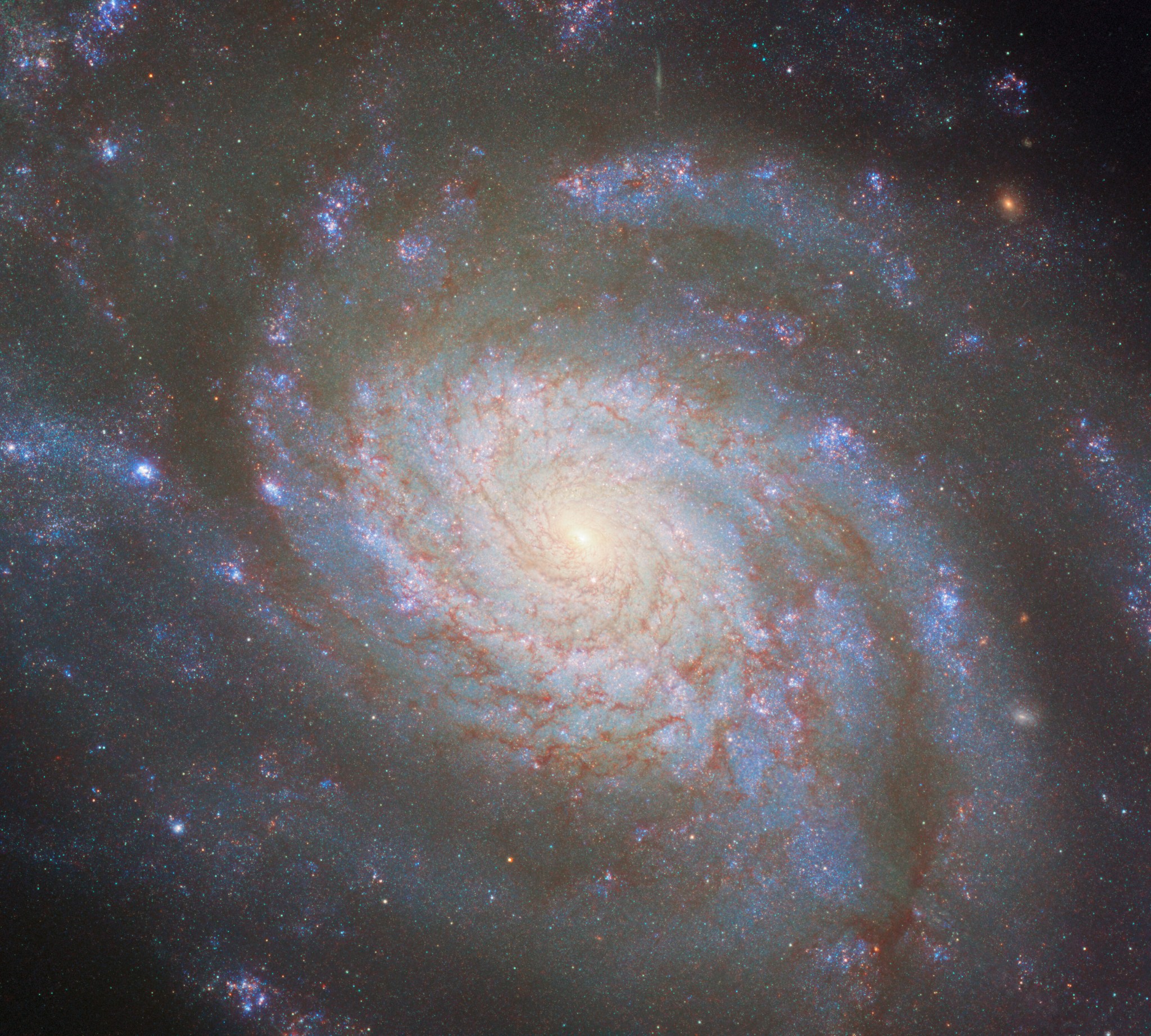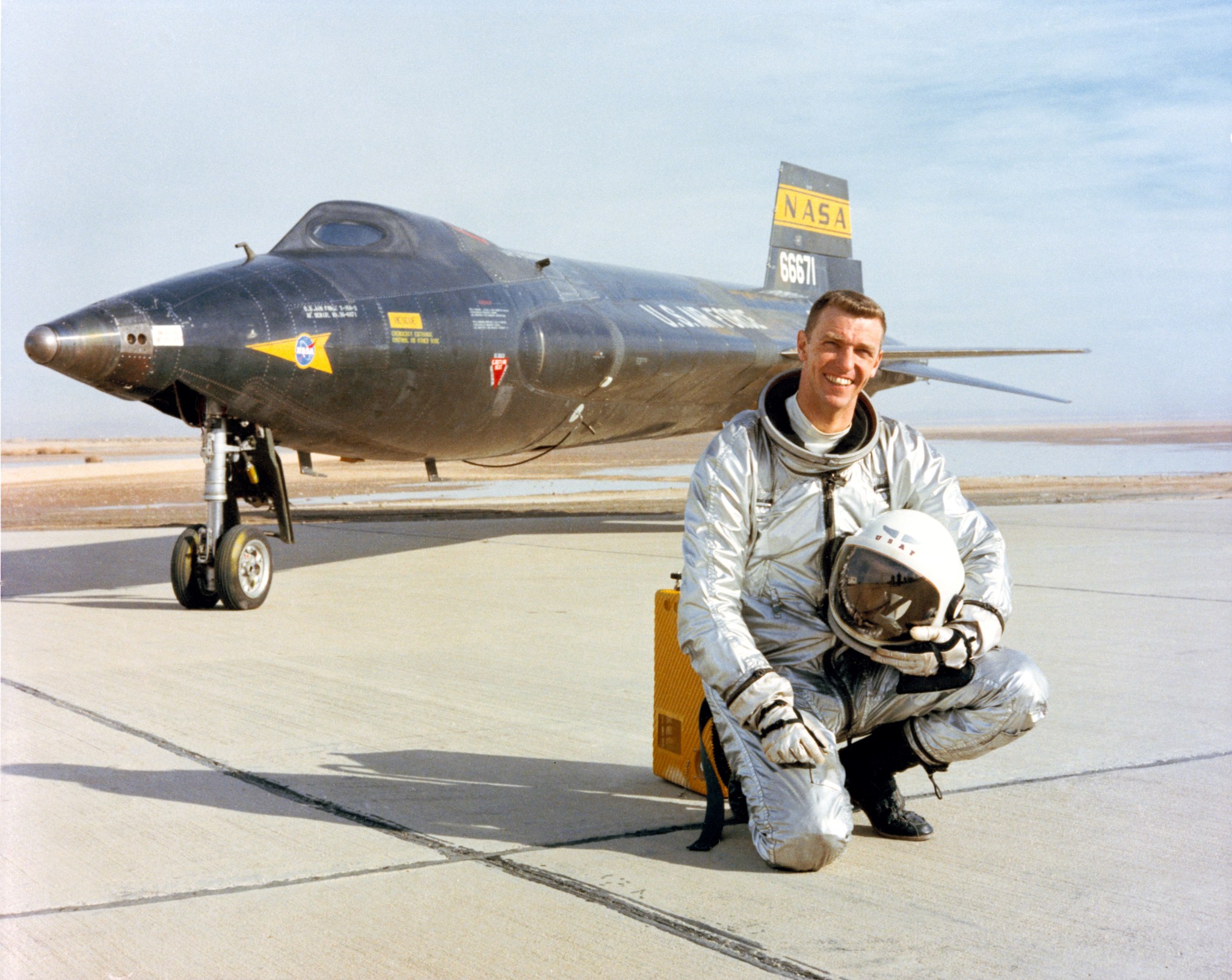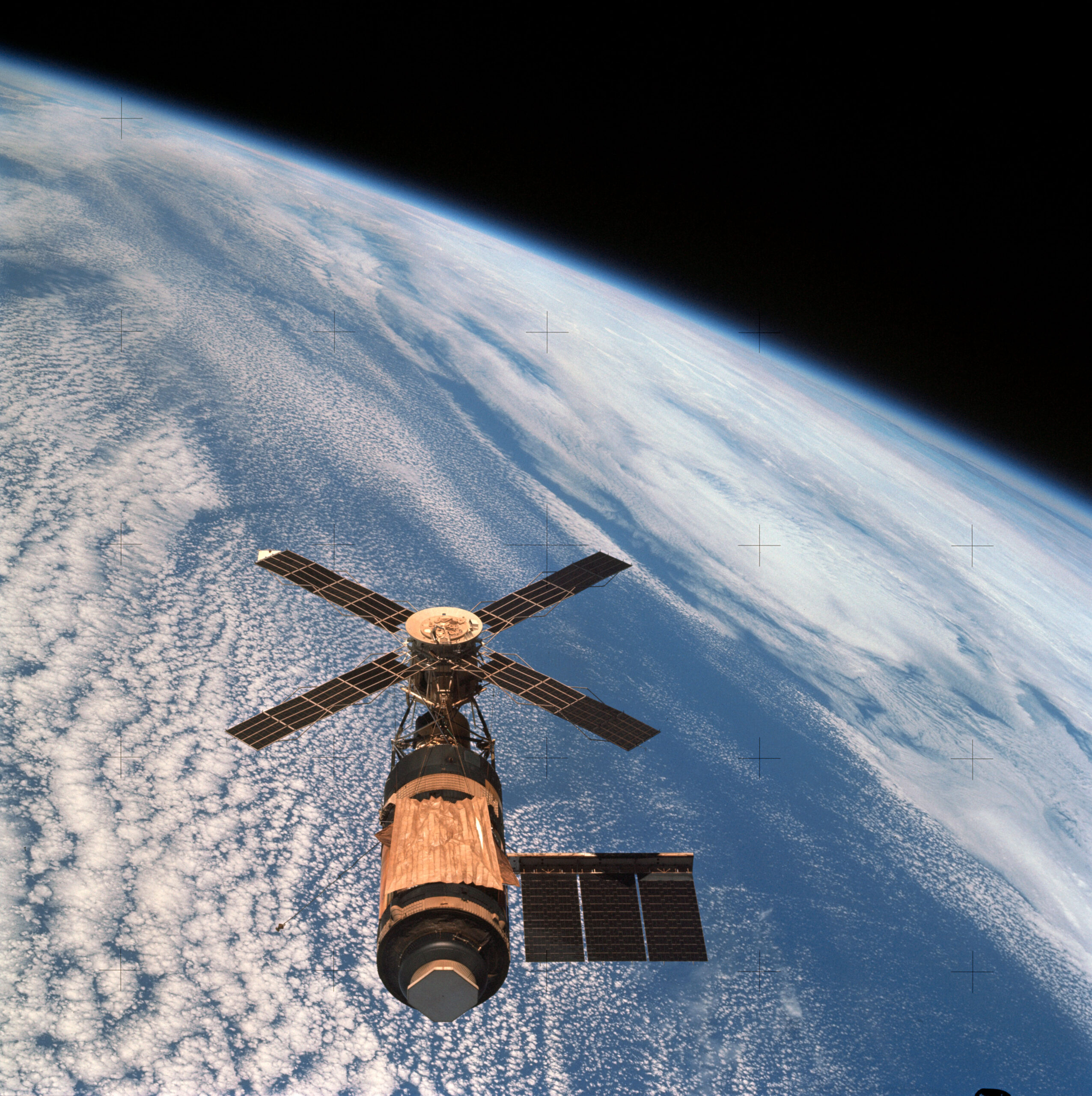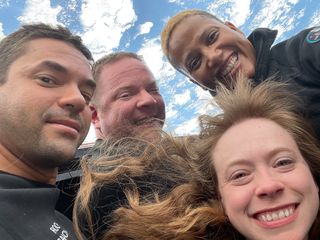The distorted spiral galaxy at center, the Penguin, and the compact elliptical at left, the Egg, are locked in an active embrace. This near- and mid-infrared image combines data from NASA’s James Webb Space Telescope’s NIRCam (Near-Infrared Camera) and MIRI (Mid-Infrared Instrument), and marks the telescope’s second year of science. Webb’s view shows that their interaction is marked by a glow of scattered stars represented in blue. Known jointly as Arp 142, the galaxies made their first pass by one another between 25 and 75 million years ago, causing “fireworks,”…
Read MoreTwo Years Since Webb’s First Images: Celebrating with the Penguin and the Egg
The distorted spiral galaxy at center, the Penguin, and the compact elliptical at left, the Egg, are locked in an active embrace. This near- and mid-infrared image combines data from NASA’s James Webb Space Telescope’s NIRCam (Near-Infrared Camera) and MIRI (Mid-Infrared Instrument), and marks the telescope’s second year of science. Webb’s view shows that their interaction is marked by a glow of scattered stars represented in blue. Known jointly as Arp 142, the galaxies made their first pass by one another between 25 and 75 million years ago, causing “fireworks,”…
Read MoreFAA investigating SpaceX Falcon 9 rocket anomaly
The U.S. Federal Aviation Administration (FAA) is requiring an investigation into the recent anomaly suffered by a SpaceX Falcon 9 rocket. The issue occurred on Thursday night (July 11), during the launch of 20 Starlink internet satellites from Vandenberg Space Force Base in California. The Falcon 9‘s upper-stage engine failed to complete its second burn as planned, and the spacecraft were deployed into a lower-than-intended orbit as a result, according to SpaceX. SpaceX is looking into the nature and cause of the anomaly, under the supervision of the FAA. “The…
Read MoreGalactic penguin honors the 2nd anniversary of James Webb Space Telescope’s 1st images
To celebrate two years since the James Webb Space Telescope (JWST) started sending images back to Earth, NASA has released yet another stunning image taken by the revolutionary space telescope. The second-anniversary JWST image shows two interacting galaxies that make up a single object called Arp 142, which appears like a cosmic penguin with its cosmic egg. Fittingly for a celebration of the JWST’s two years of science results, the new image is a two-for-two. Arp 142’s Penguin and Egg scene comprises two interacting galaxies located around 326 million light-years from…
Read MoreNASA Marshall Engineers Unveil Versatile, Low-cost Hybrid Engine Testbed
4 min read Preparations for Next Moonwalk Simulations Underway (and Underwater) Paul Dumbacher, right, lead test engineer for the Propulsion Test Branch at NASA’s Marshall Space Flight Center in Huntsville, Alabama, confers with Meredith Patterson, solid propulsion systems engineer, as they install the 11-inch hybrid rocket motor testbed into its cradle in Marshall’s East Test Stand. The new testbed, offering versatile, low-cost test opportunities to NASA propulsion engineers and their government, academic, and industry partners, reflects the collaboration of dozens of team members across multiple departments at Marshall. NASA/Charles Beason…
Read MoreVivid Portrait of Interacting Galaxies Marks Webb’s Second Anniversary
6 Min Read Vivid Portrait of Interacting Galaxies Marks Webb’s Second Anniversary Webb’s view of the interacting galaxies of Arp 142 that combines Webb’s NIRCam and MIRI instrument images. Full image below. Two for two! A duo of interacting galaxies commemorates the second science anniversary of NASA’s James Webb Space Telescope, which takes constant observations, including images and highly detailed data known as spectra. Its operations have led to a “parade” of discoveries by astronomers around the world. “Since President Biden and Vice President Harris unveiled the first image from…
Read MoreHubble Measures the Distance to a Supernova
3 min read Hubble Measures the Distance to a Supernova This NASA/ESA Hubble Space Telescope image features the galaxy NGC 3810. ESA/Hubble & NASA, D. Sand, R. J. Foley Measuring the distance to truly remote objects like galaxies, quasars, and galaxy clusters is a crucial task in astrophysics, particularly when it comes to studying the early universe, but it’s a difficult one to complete. We can only measure the distances to a few nearby objects like the Sun, planets, and some nearby stars directly. Beyond that, astronomers need to use…
Read MoreNASA Remembers Retired Astronaut, US Air Force Pilot Joe Engle
Portrait of retired NASA astronaut Joe Engle wearing flight suit in front of an X-15 fighter circa 1963. Retired NASA astronaut and U.S. Air Force Maj. Gen. Joe Engle died July 10, surrounded by his family at home in Houston. Among his many honors, he is the only astronaut to pilot both the X-15 and space shuttle. He was 91. Engle became an astronaut at age 32 while flying the X-15 for the U.S. Air Force, becoming the youngest pilot ever to qualify as an astronaut. When selected as a…
Read More45 Years Ago: Skylab Reenters Earth’s Atmosphere
A few days before they left Skylab on Feb. 8, 1974, the final crew to occupy the station raised its altitude, hoping to keep it in orbit until a future space shuttle could revisit it. But higher than predicted solar activity caused the Earth’s atmosphere to expand, increasing drag on the large vehicle, causing its orbit to decay faster than expected. In 1978, controllers reactivated the station and changed its attitude, hoping to keep it in orbit as long as possible by reducing atmospheric drag. In the meantime, delays in…
Read More‘Drawn to our planet:’ How spaceflight changed SpaceX Inspiration4 astronaut Chris Sembroski
Inspiration4 was the world’s first all-civilian orbital mission, sending a four-person crew skyward atop a SpaceX Falcon 9 rocket. The privately funded commercial mission took place from Sept. 16 to Sept. 18, 2021. Inspiration4 used a SpaceX Crew Dragon spacecraft called “Resilience,” which was commanded by billionaire entrepreneur Jared Isaacman, the founder and CEO of Shift4 Payments. You should get familiar with that name, as he’s also leading the upcoming Polaris Dawn mission, the first effort in the three-flight Polaris program, which is funded and commanded by Isaacman. Isaacman booked…
Read More
